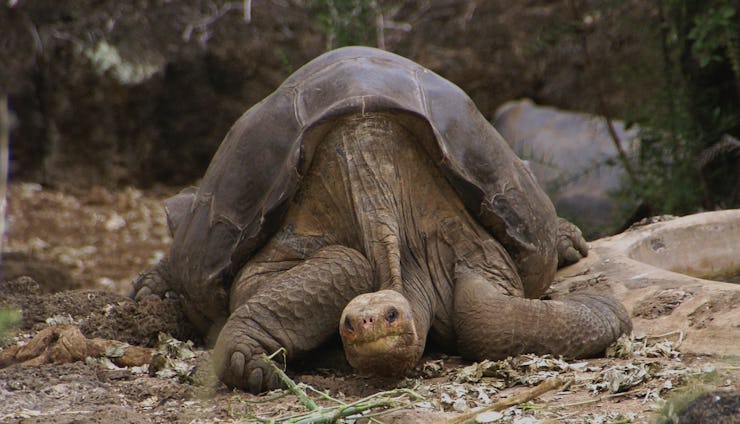How to Bring the Galapagos Tortoise Back From the Dead
Does resurrection count if it's done on the backs of hybrids?

When Lonesome George died in 2012, we lost the final Chelonoidis nigra abingdoni, the species of Galapagos tortoise found on Pinta Island, a tiny triangle of land some 690 miles off the coast of Ecuador.
But there’s a glimmer of optimism that we can bring the species back from extinction, thanks to a team of scientists who will piece together a genetic puzzle from different tortoises — hybrid animals on nearby islands — that harbor Pinta tortoise DNA.
The researchers, from Yale University and Galápagos Conservancy, are certainly optimistic: After a few generations, 95 percent of the Pinta’s “lost genes” will be restored through a breeding program, they told the New York Times. This echoes a Yale University genetic analysis in 2012, which found that some nearby hybrids are likely the immediate children of a purebred C. abingdoni — itself probably a descendant of tortoises 19th century sailors chucked overboard — with another species.
This echoes a Yale University genetic analysis in 2012, which found that some nearby hybrids are likely the immediate children of a purebred C. abingdoni — itself probably a descendant of tortoises 19th century sailors chucked overboard — with another species.
What this plan has going for it is that human-dictated breeding is an awesomely powerful thing. We’ve taken the wolf and turned it into the chihuahua. Sure, that was over some tens of thousands of years; but aspects of canid domestication — the floppy ears, the wagging tails — has been replicated on a compressed timeline with Russian foxes.
Can we do the same with the Pinta tortoise? The last hurdle is getting tortoises to breed. It can take a little luck — Lonesome George was a notorious bachelor — but when it happens, it’s magic.